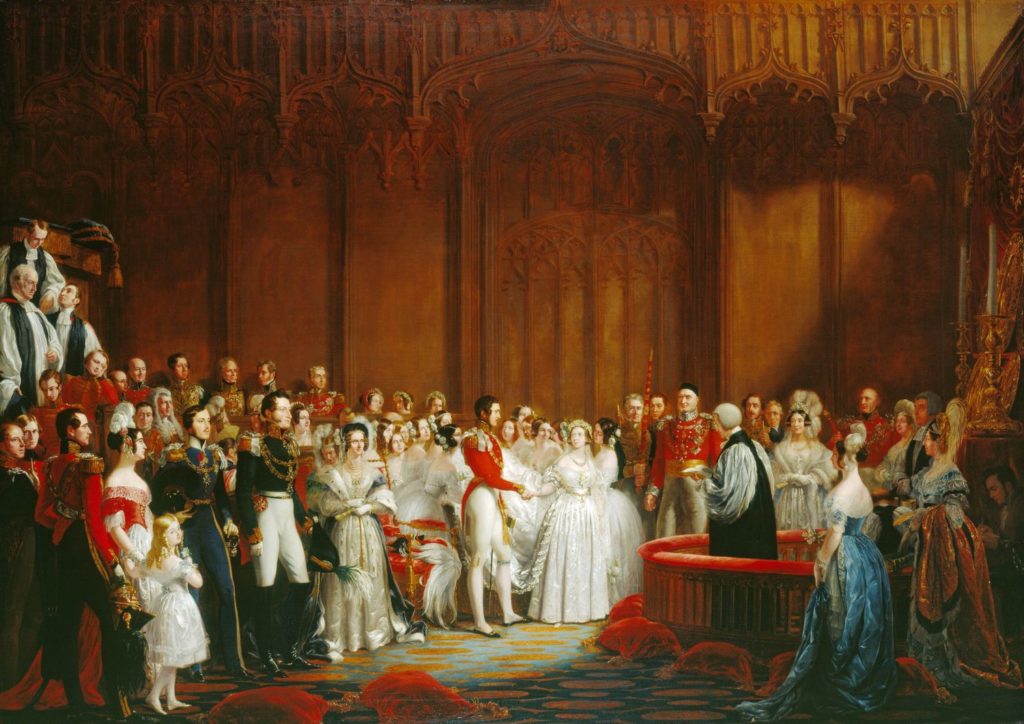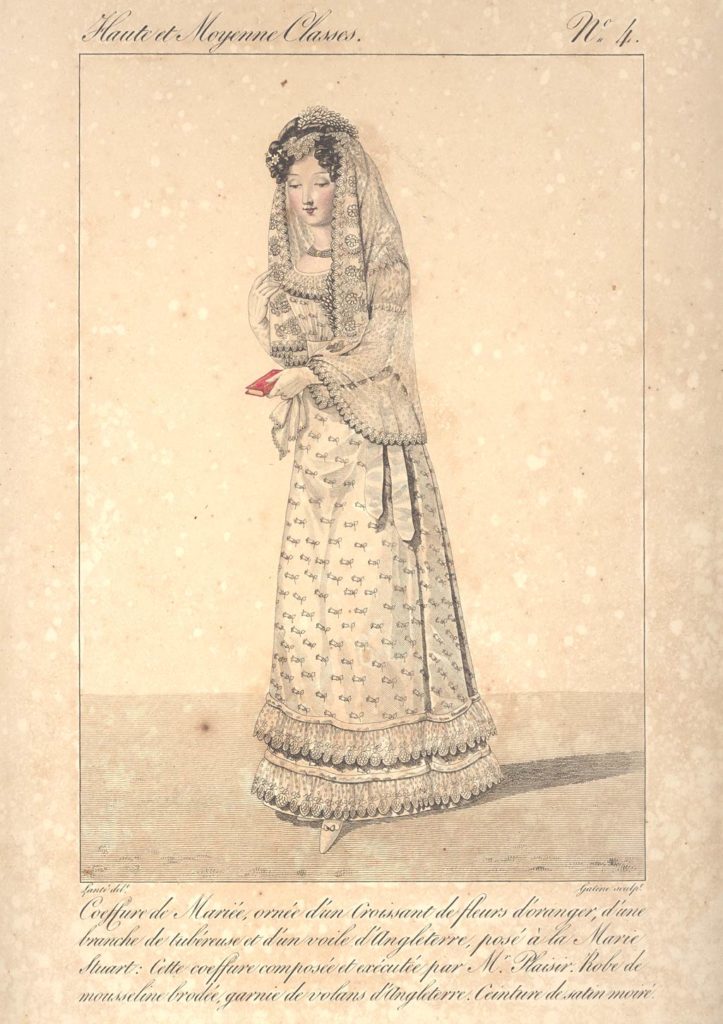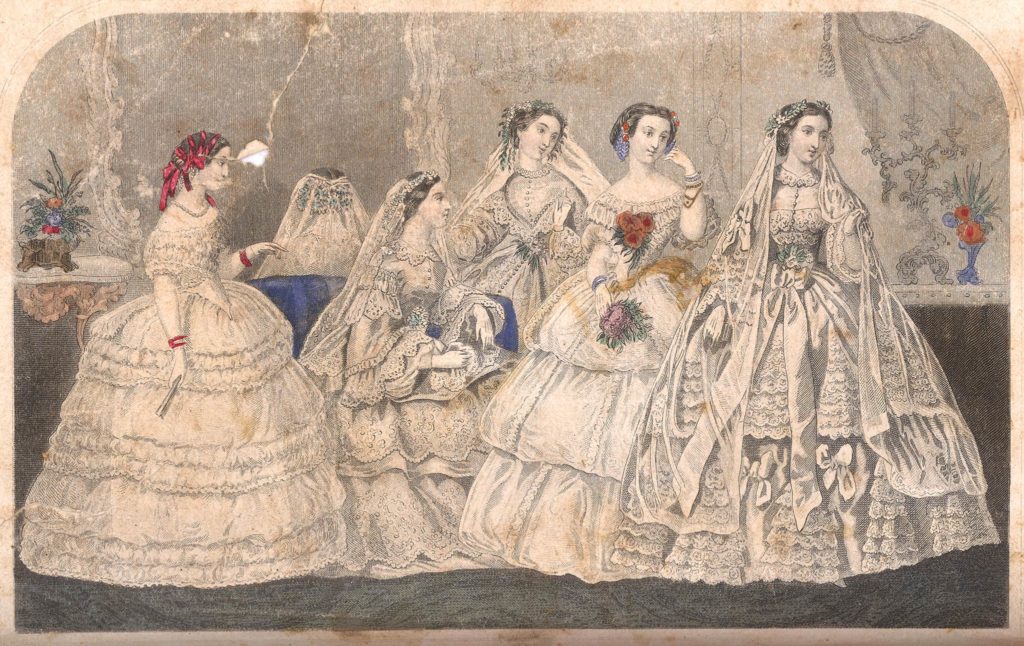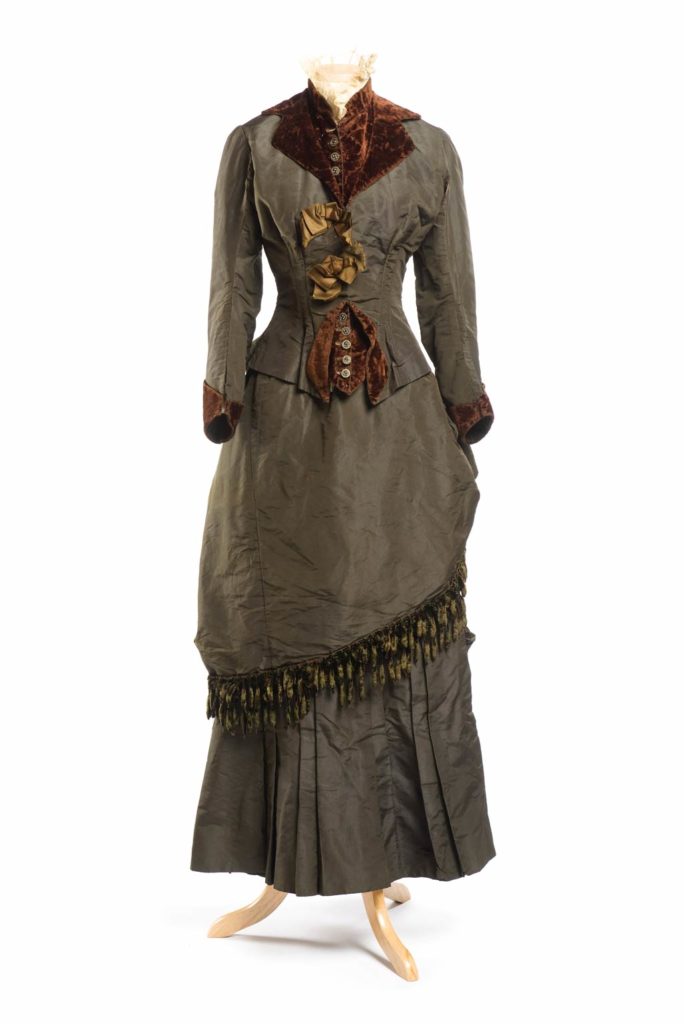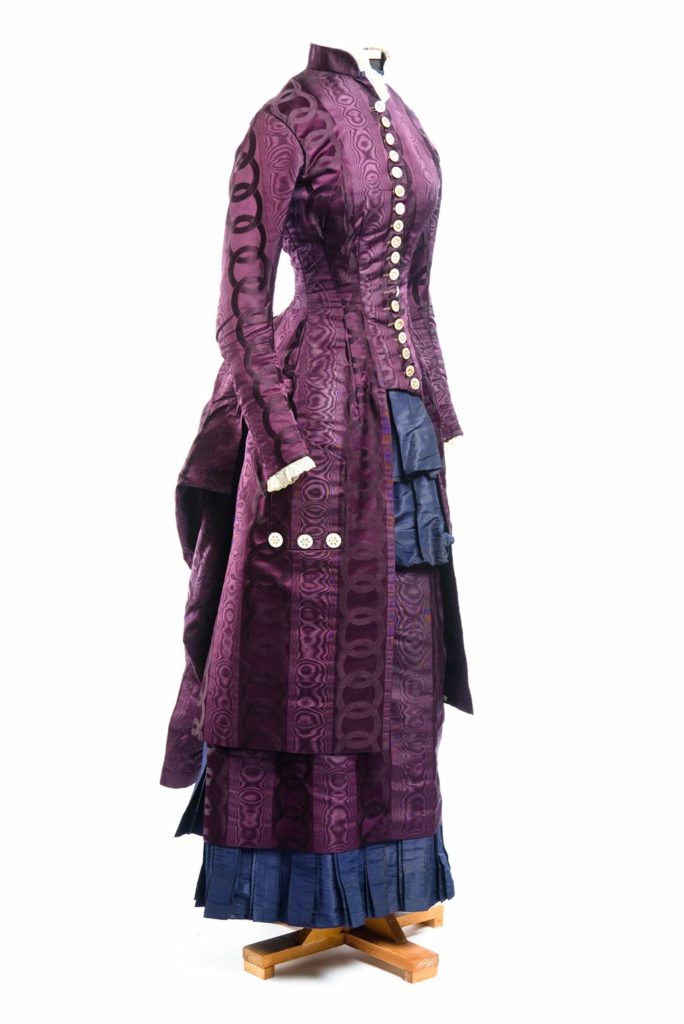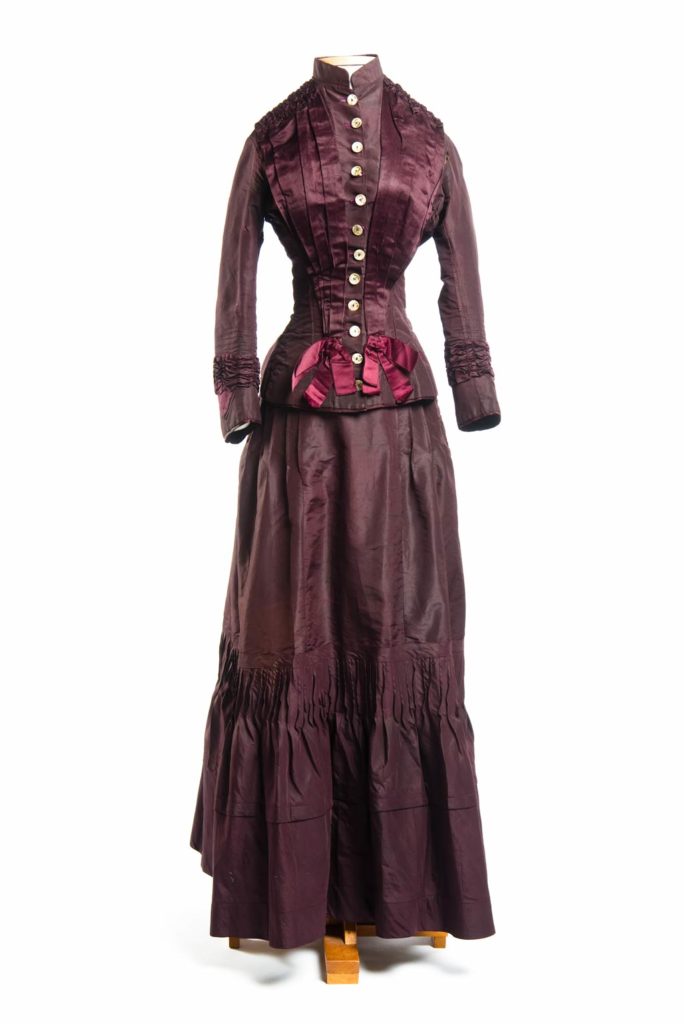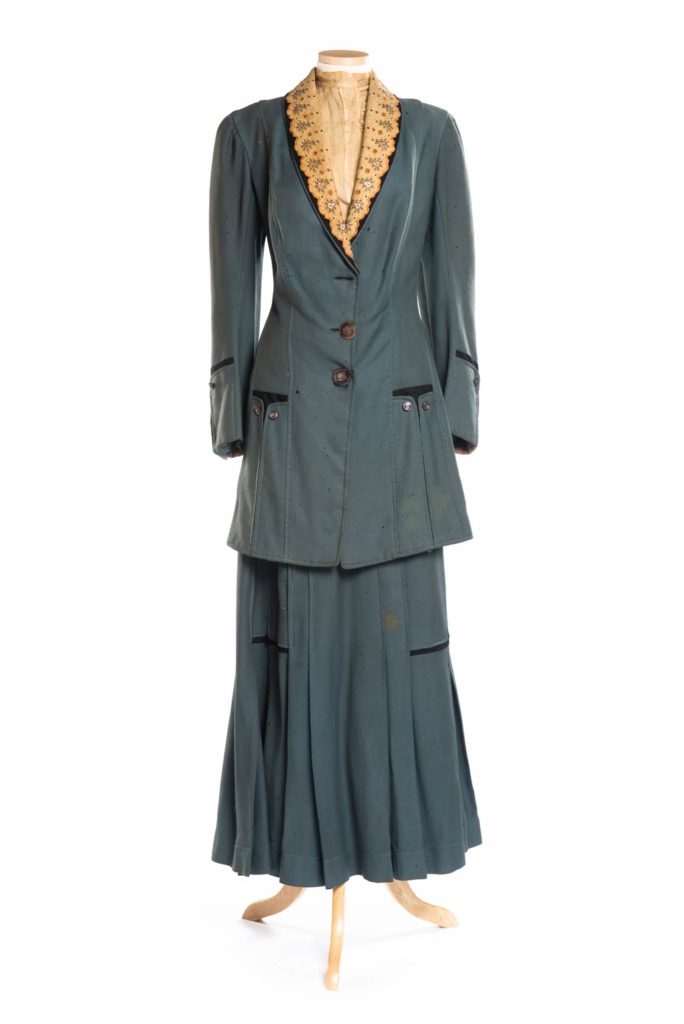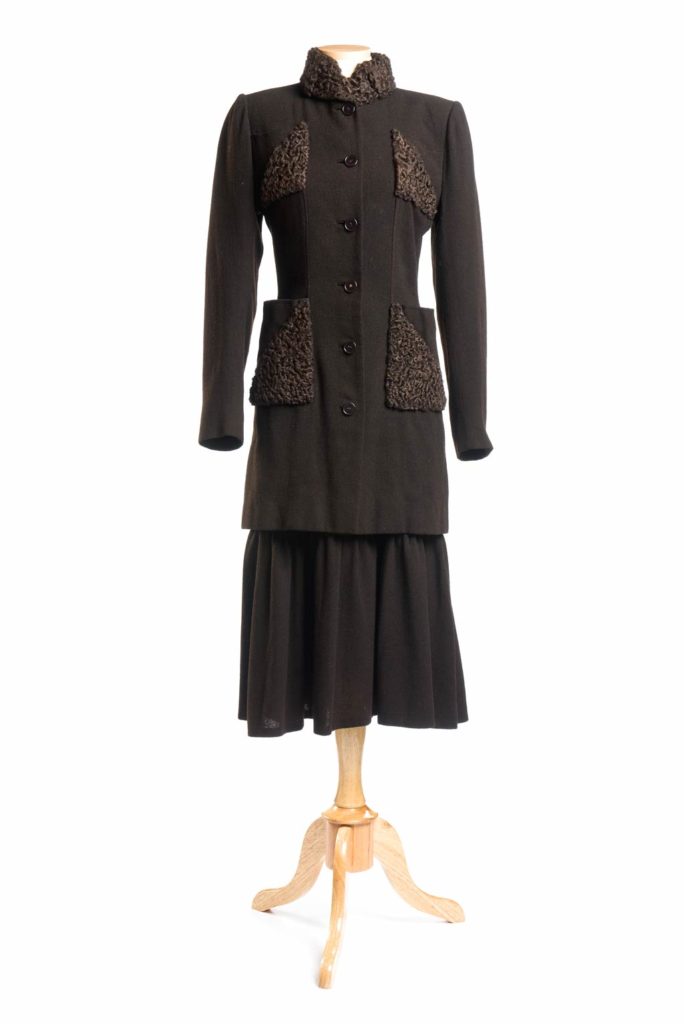Wedding Colors
The popularity of the white wedding dress is credited to Queen Victoria and her extraordinary wedding to Albert of Saxe-Coburg in 1840.
The desire to emulate her enchanting bridal regalia crossed the English Channel and the Atlantic Ocean with speed and enthusiasm. An entire wedding etiquette and propriety grew and expanded from that point as seen in this Godey’s fashion plate from 1858.
But, we know that white was associated with brides and weddings long before that. Even some of the fashion plates from the early 19th century reflect this desire for a white wedding, such as this one from Le Journal des Dames et des Modes, 1820.
And, most of the wedding dresses in the Museum’s collection are also white. Perhaps people tended to save white wedding dresses; perhaps those of other colors were more practical and could have been worn for other occasions as well. It is interesting, though, that some of the late 19th century wedding dresses in our collection are blue, purple and green.
This green silk dress was worn by Effie Ann McDougald who married William Walker Evans on December 26, 1884 in Marion, South Carolina.
Caroline Amelia Randall married William Rush Kelly on January 2, 1884 in Blackville, South Carolina and wore this dress made by her mother, Harriet Theresa Barrington Randall.
This plum silk taffeta wedding dress was worn by Mary Ann McLaughlin when she married James Francis Condon on April 27, 1883 in Charleston.
The deep, rich colors of these dresses may reflect the popularity of the aniline dyes that were so new and exciting on the market. While these new colors brought a bold new palette to the fashion scene, many of the silks of this period were “weighted” with metallic salts of tin or lead, especially the darker colors. This weighting gave the silk more body, but usually weakened the fabric. Many garments from this time period are now suffering from this irreversible damage.
Some of our “colorful” wedding dresses were indeed selected for practicality. This stately blue wool suit was apparently chosen so the bride and groom could hop on the train for a Baltimore honeymoon following the ceremony. It was worn by Alma Grace Van Keuren who married Louis Johnson Stackley on August 17, 1910 in Kingstree, South Carolina.
And this stylish dark brown wool suit was chosen for Jean Welsh’s wedding as a bride just a month after the United States entered World War II. She married Charlestonian Lieutenant Eugene Eason on January 7, 1942 in Charlotte, North Carolina. In fact, there were no long formal wedding gowns shown in the Sears catalog after 1942.
In other cultures and in earlier times, colors were chosen for marriages based on their symbolic meanings. Green was often considered a symbol of fertility; blue was associated with the Virgin Mary and her innocence and motherhood. Red was worn in Eastern countries for weddings as a source of good luck. Yellow was the classic color of Hymen, the god of marriage for the Romans – who often wore a flame yellow veil and saffron-colored shoes. In 18th century America, yellow was a popular wedding color, with blue second and lilac third. White and silver were in vogue for many 1750 British brides. And white has endured, symbolic of purity – impractical and thus even more special. It was often chosen to show off one’s wealth or royalty, as were the lengthy veils and elaborate styles of the dresses themselves.
A mid-nineteenth century rhyme might help a new bride decide on the best color choice for her wedding.
Married in white, you have chosen right,
Married in green, ashamed to be seen,
Married in gray, you will go far away,
Married in red, you will wish yourself dead,
Married in blue, your love will be true,
Married in yellow, ashamed of your fellow,
Married in brown, you will live in town,
Married in pink, your spirit with sink,
Married in black, you will wish yourself back.


